
Dogs
The bichon frise is a small, friendly, affectionate dog of Mediterranean ancestry. Related to the Maltese and the poodle, the bichon frise is often recommended for people with mild allergies because its curly coat infrequently sheds. (If you have allergies, speak with your doctor before making a decision to buy any pet.) This breed has recently become even more popular after winning the 2001 Westminster Dog Show and 2001 AKC/Eukanuba American Dog Classic.
The bichon frise is an old breed that can be traced to the 1300s, but it is likely far older (some people say it pre-dates the Common Era). Its oldest recognized ancestor is the barbichon cam, or "water spaniel," which evolved into four breeds: the bichon bolognese, the bichon havanese, the bichon Maltese and the bichon Tenerife. Today's bichon frise, named in 1933, is directly descended from the Tenerife and is a member of the non-sporting group of dogs.
The bichon Tenerife attracted the attention of Europe's nobility, particularly those in Italy, as well as wealthy merchants. As Italian influence spread, the Tenerife happily followed. The dog became part of the court of the French King Francis in the early 1500s. By the late 1500s, the Tenerife had become a favorite of France's King Henry III, who reportedly had a Tenerife travel with him wherever he went. The dog was pampered, perfumed and beribboned, giving rise to the French verb, "bichonner" (to pamper).
The bichon Tenerife was soon given a prominent place in other countries, and artists included a bichon-like dog in many of their portraits. The Spanish artist Francisco Goya was one famous artist who favored the bichon Tenerife.
The dog gradually lost his aristocratic favor and became a street dog, performing in circuses and fairs. The breed survived and in 1933, the name was changed to bichon a polio frise (bichon with the curly coat). The name was shortened to bichon frise, and the dog was admitted to the French Kennel club in 1934. The bichon frise was admitted to the American Kennel Club in 1972.
"Bichon frise" refers to the breed's curly coat, which is white. The dog has black eyes, eye rims and halos. Puppies sometimes have beige to apricot markings, but these fade over time. An adult dog is sturdy and muscular.
The white coat hides graying hairs, so it can be difficult to tell the age of a particular bichon frise.
The adult bichon stands 9 1/2 inches to 11 1/2 inches at the shoulder and weighs between 10 and 18 pounds.
The bichon frise is gentle, sensitive, playful and affectionate. The cheerful attitude is the breed's hallmark.
The bichon frise gets along well with people of all ages and in varied living conditions. The dog loves to play but is not hyperactive. This breed tends to be good with children and with other animals. The bichon frise is not a guard dog, but is a watchdog and will announce strangers.
The breed is easy to train using standard obedience commands. The bichon frise is alert and eager to please.
It is very important to groom a bichon frise. Because the coat sheds slowly and infrequently, it will become matted quickly if not brushed often.
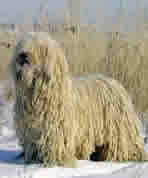 Komondors: A guide to dogs and puppies of the Komondor breed
Komondors: A guide to dogs and puppies of the Komondor breed
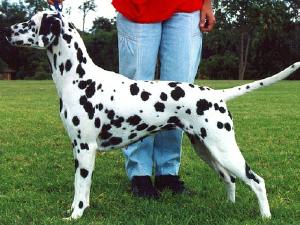 Dalmatian
Dalmatian
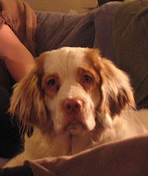 Clumber Spaniels: A guide to dogs and puppies of the Clumber Spaniel breed
Clumber Spaniels: A guide to dogs and puppies of the Clumber Spaniel breed
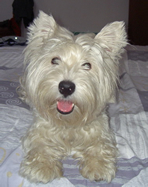 West Highland White Terriers: A guide to dogs and puppies of the West Highland White Terrier breed
West Highland White Terriers: A guide to dogs and puppies of the West Highland White Terrier breed
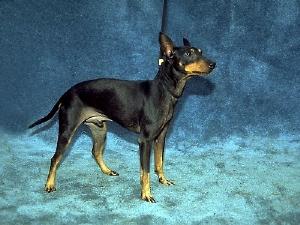 Toy Manchester Terrier
Toy Manchester Terrier
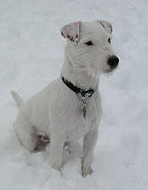 Parson Russell Terriers: A guide to dogs and puppies of the Parson Russell Terrier breed
Parson Russell Terriers: A guide to dogs and puppies of the Parson Russell Terrier breed
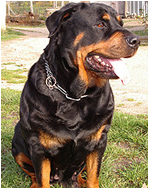 Rottweilers: A guide to dogs and puppies of the Rottweiler breed
The Rottweiler!
A Rottweiler is a medium large dog breed th
Rottweilers: A guide to dogs and puppies of the Rottweiler breed
The Rottweiler!
A Rottweiler is a medium large dog breed th
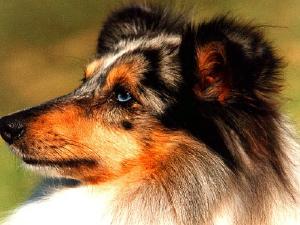 Shetland Sheepdog
Shetland Sheep
Shetland Sheepdog
Shetland Sheep
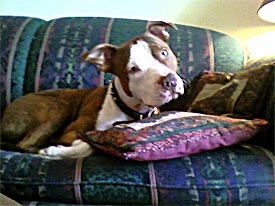 American Staffordshire
American Staff
American Staffordshire
American Staff
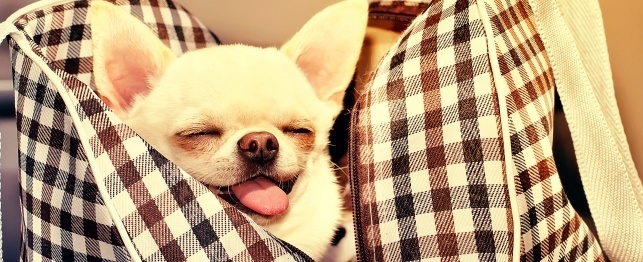 Toy Dog Breeds
Toy Dog Breeds
Toy Dog Breeds
Toy Dog Breeds
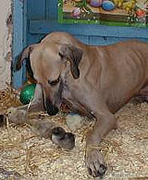 Sloughis: A guide to dogs and puppies of the Sloughi breed
The Sloughi!
Sloughis have fairly broad skulls with a wedge
Sloughis: A guide to dogs and puppies of the Sloughi breed
The Sloughi!
Sloughis have fairly broad skulls with a wedge
Copyright © 2005-2016 Pet Information All Rights Reserved
Contact us: www162date@outlook.com